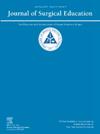FAST考试真的快吗?利用创伤视频回顾快速评估用户表现
IF 2.6
3区 医学
Q1 EDUCATION, SCIENTIFIC DISCIPLINES
引用次数: 0
摘要
虽然创伤超声集中评估(FAST)因其速度和疗效而受到称赞,但其在外科培训生中的熟练程度仍未得到充分探讨。我们的目的是评估外科实习生在现实世界中使用创伤视频回顾(TVR)进行FAST考试的表现。方法本横断面研究包括2023年7月至12月间使用TVR记录并进行FAST的钝性创伤激活。收集总FAST时间和净FAST时间(有中断和没有中断)。两名放射科医生使用任务特定检查表(TSC)独立对保存的剪辑的诊断质量和技术成像技术进行评分。将FAST结果与确认性检查(ct扫描和手术结果)进行比较,以评估诊断的准确性。结果共分析93例FAST检查,中位总时间 = 2.9分钟[2.28-4.40],净时间 = 2.33分钟[1.87-3.08]。约80%的病例(41/51例保留夹)至少表现出一个非诊断性质量解剖窗口,平均修正tsc评分范围为3/5至3.65/5,表明需要中度至轻度改善质量。只有20%的病例(10/51)被发现在所有四个解剖窗口上都有诊断质量的夹子,受训者平均总tsc得分为17.9/24,表明熟练完成任务。在6/11阳性fast中发现腹腔内游离血,在我们的学员中敏感性和特异性分别为54%和92%。结论受训人员可在较短时间内完成FAST,但其质量和诊断准确性有待提高。这些结果突出了加强培训计划的必要性,以确保质量和准确性都得到优化。本文章由计算机程序翻译,如有差异,请以英文原文为准。
Is the FAST Exam Actually Fast? Utilizing Trauma Video Review to Assess FAST User Performance
Introduction
While the Focused Assessment with Sonography for Trauma (FAST) is lauded for its speed and efficacy, its proficiency among surgical trainees remains underexplored. We aim to assess the performance of surgical trainees in conducting FAST exams in real-world settings using trauma video review (TVR).
Methods
This cross-sectional study included blunt trauma activations between July-December 2023 that were recorded using TVR and had a FAST performed. Total and net FAST times (with and without interruptions) were collected. Two radiologists independently scored the diagnostic quality and technical imaging technique of saved clips using a Task Specific Checklist (TSC). FAST findings were compared with confirmatory tests (CT-scan and surgical findings) to assess diagnostic accuracy.
Results
Ninety-three FAST exams were analyzed (median total time = 2.9 minutes [2.28-4.40], and net time = 2.33 minutes [1.87-3.08]). Around 80% of cases (41/51 cases for which clips were saved) exhibited at least one nondiagnostic quality anatomic window, with average modified-TSC scores ranging from 3/5 to 3.65/5, suggesting that moderate to mild improvements in quality are needed. Only 20% of cases (10/51) were found to have clips of diagnostic quality on all four anatomic windows, with trainees averaging a total-TSC score of 17.9/24, indicating proficiency in task completion. Intraperitoneal free blood was found in 6/11 positive FASTs, with a sensitivity and specificity among our trainees of 54% and 92%, respectively.
Conclusion
While trainees can complete the FAST within a short time frame, the quality and diagnostic accuracy require significant improvement. These results highlight the need for enhanced training programs to ensure both quality and accuracy are optimized.
求助全文
通过发布文献求助,成功后即可免费获取论文全文。
去求助
来源期刊

Journal of Surgical Education
EDUCATION, SCIENTIFIC DISCIPLINES-SURGERY
CiteScore
5.60
自引率
10.30%
发文量
261
审稿时长
48 days
期刊介绍:
The Journal of Surgical Education (JSE) is dedicated to advancing the field of surgical education through original research. The journal publishes research articles in all surgical disciplines on topics relative to the education of surgical students, residents, and fellows, as well as practicing surgeons. Our readers look to JSE for timely, innovative research findings from the international surgical education community. As the official journal of the Association of Program Directors in Surgery (APDS), JSE publishes the proceedings of the annual APDS meeting held during Surgery Education Week.
 求助内容:
求助内容: 应助结果提醒方式:
应助结果提醒方式:


